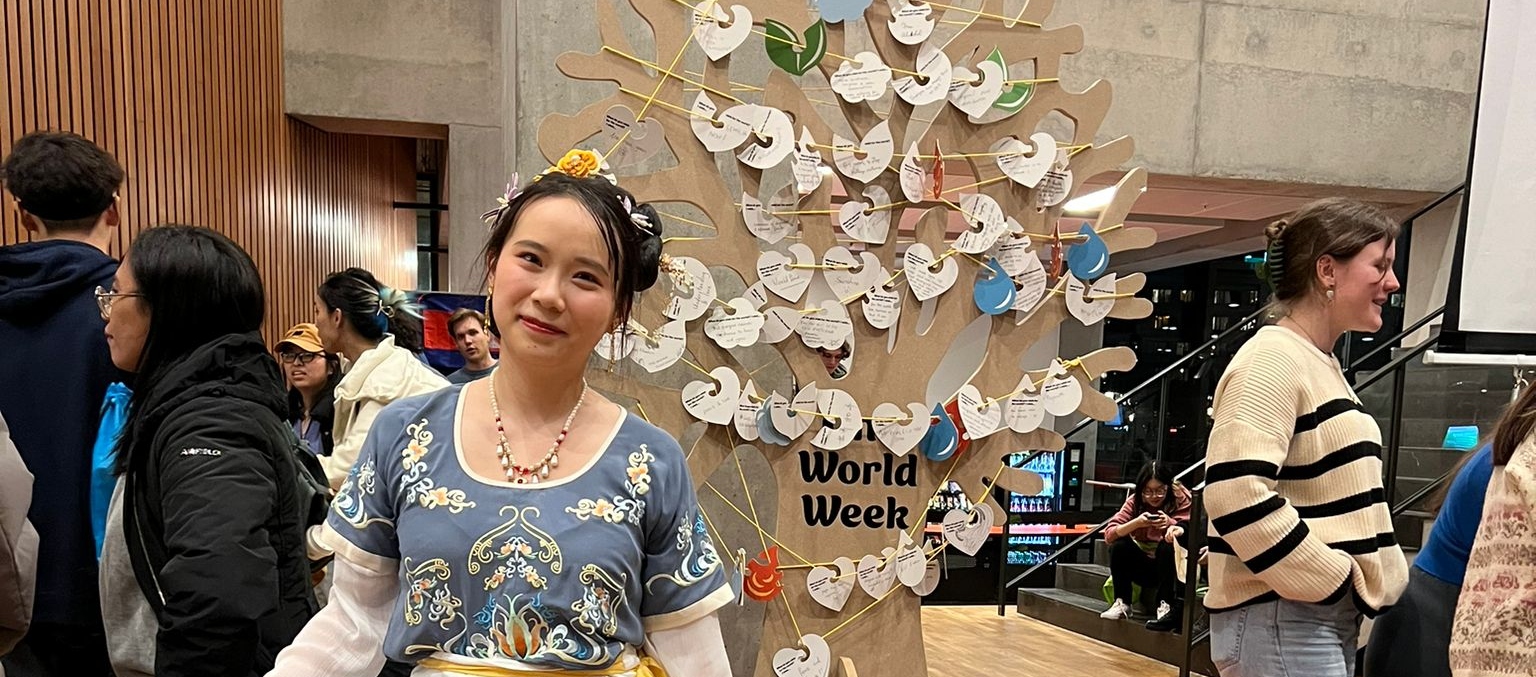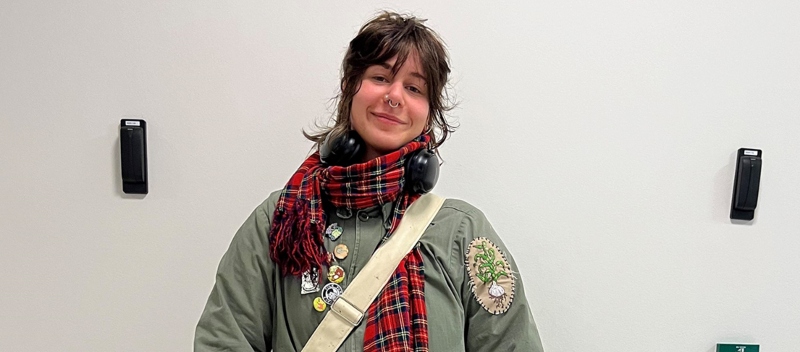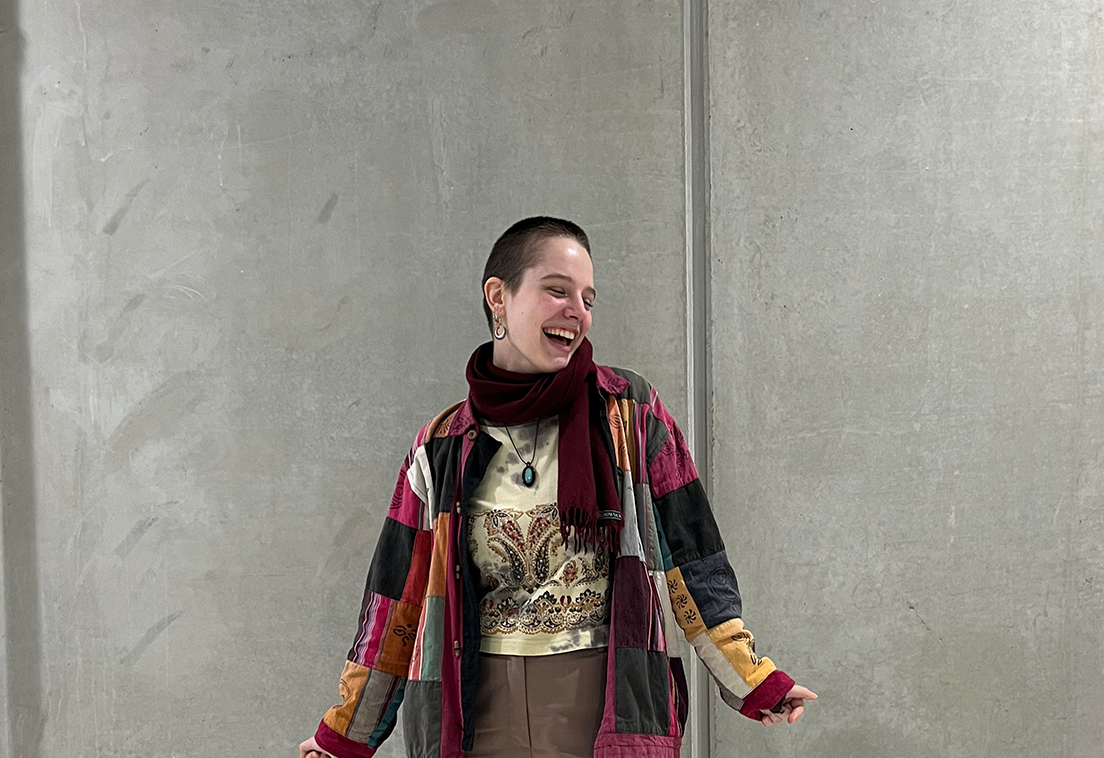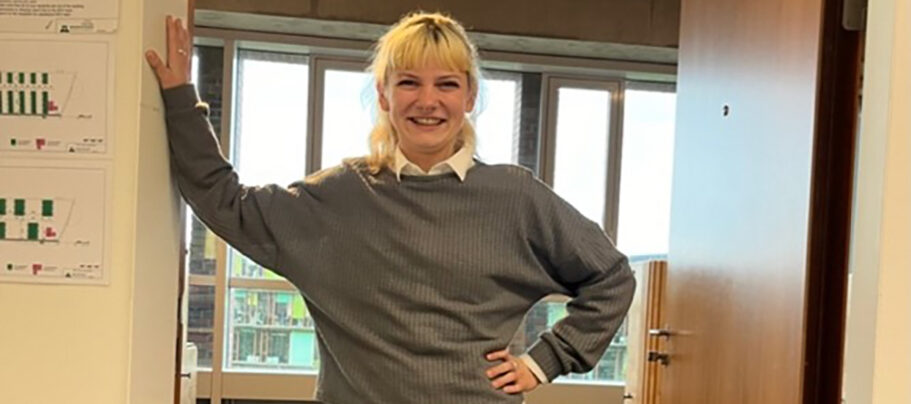Text and photos Lieke Muijsert
You see the most fabulous looking people and the coolest outfits on the Wageningen campus and especially during the cultural fair of 2024 in Forum. We shine the spotlight on them here. This time, Wenyu Hu, a PhD student in Plant Sciences. She is from Kunming City in the Yunnan province in the south west of China.
‘The dress that I am wearing is not specific for a location, it is specific for the Tang dynasty. Every Chinese dynasty knows its own type of outfit. Another girl here wears an outfit from the Ming dynasty. It looks different than a dress from Tang dynasty because during the Tang dynasty women would enjoy more freedom and the style was affected by northern ethnic minorities. Women were allowed to ‘play’ outside and therefore the sleeves are small.
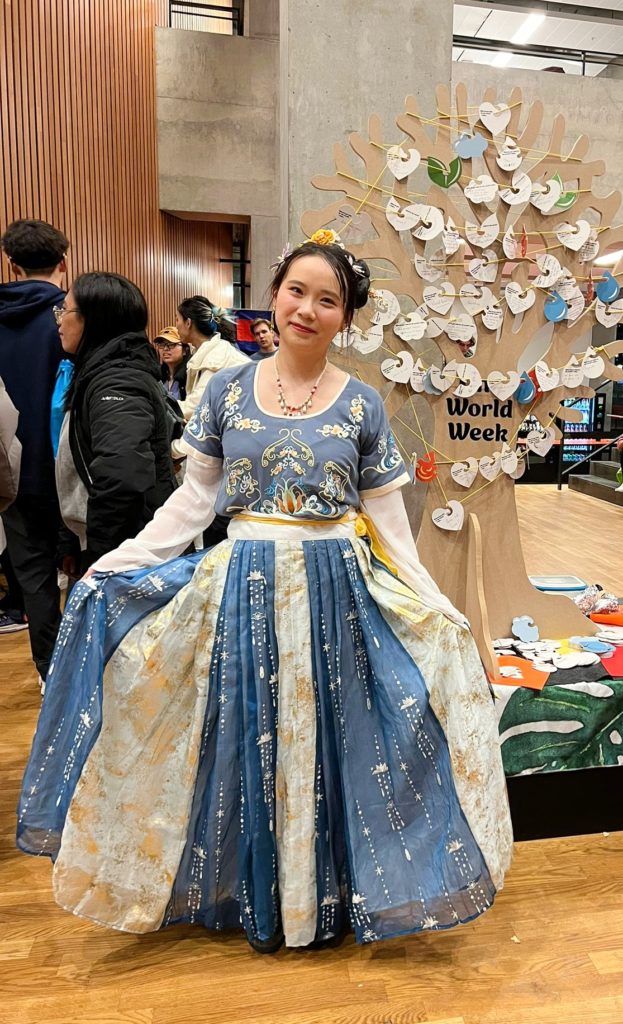
‘In Ming dynasty the dresses that had wider sleeves would be considered as an indoor dress. Especially higher ranked people would wear the big sleeved dress because they have servants that work for them and thus they do not mind wearing wider sleeves.
‘What also differs is the color. For example, in some dynasties who would wear black or white would be considered from a higher rank. I am wearing a blue dress, it is one of the most ‘normal’ colors that people could wear. Yellow and golden dresses would be worn by royal people.
‘I have more or less ten of these dresses at home, of which I brought three or four here in Wageningen. I sometimes wear it during activities in Wageningen, like during the Mid-Autumn Festival organized by CASSW and the catwalk show during the one world week. For some reason we didn’t wear this kind of traditional clothing for hundreds of years. People start forgetting what we used to dress up back in time. We think that this is a pity because it can represent our culture and that’s very meaningful for us. Luckily, I believe that we have been starting to re-wear traditional clothing in China gradually over the past ten years. It is a bit new again.’

